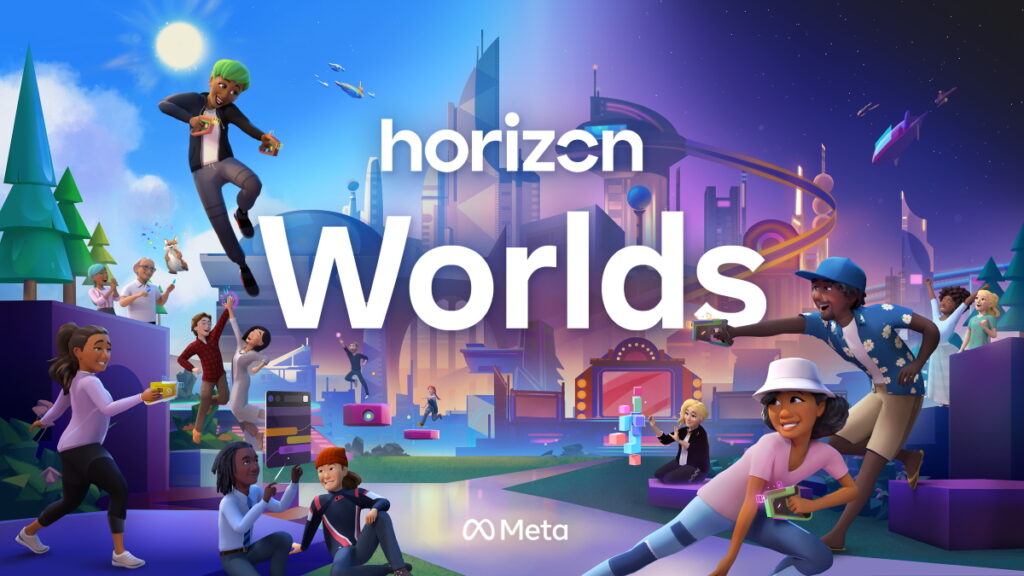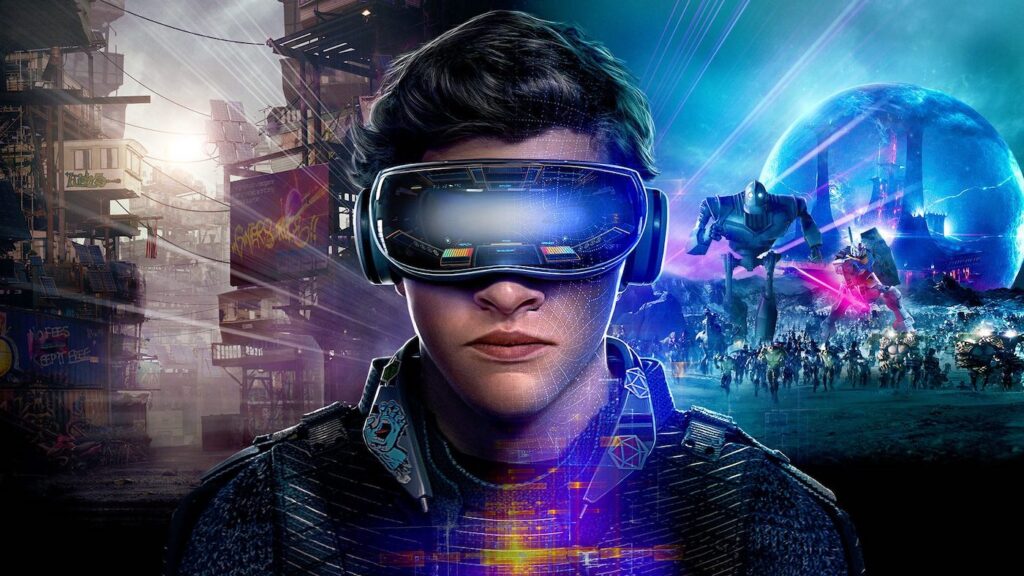Top image by Artur Sadlos.
With 2022 well underway we can finally leave 2021 behind. Last year it became more important than ever to socialise online due to the enduring pandemic — with multiplayer games at the forefront. Now, Gameye asked several industry experts for their predictions for 2022, particularly with multiplayer games. Here is what they think will be the hot topics for the coming year.
1. The metaverse will evolve through VR
At the tailend of 2021, Facebook changed their umbrella company to Meta. With the change came a sudden surge of interest in the metaverse. And while it’s still in its infancy, we’re going to hear a lot about the metaverse in 2022.
The success of the metaverse is inherently tied to the success of virtual reality (VR) and augmented reality (AR) technology. Over the last couple of years, we’ve seen great strides in making VR gaming more accessible to everybody. Headsets are now wireless and much more practical. This evolution will continue, lowering the price and weight while increasing the power.
This is particularly important if the metaverse is going to take off. We’ll need to wear a lot of processing power on our faces, if we’re going to explore entire worlds (even universes, one day).
Number of VR players will grow
“VR will take noticeable steps towards becoming a real gaming platform,” Joakim Achren from Elite Game Dev explained to us. “This will happen because Meta (previously Facebook) will be so active that the competition will be forced to innovate. The platforms will become more social than ever, and they will start facilitating larger multiplayer games.”
Tim Armstrong, Plaintextnerd and lead developer at Latency.gg, agrees that 2022 will likely see VR go mainstream. “With some of the best hardware we’ve ever seen, now being in the affordability range of most households, I expect to see the number of VR players grow dramatically over this holiday break,” Armstrong said. “This will hopefully drive the development of more unique and immersive titles that tell stories that couldn’t be expressed through conventional means.”

2. But VR isn’t quite ready for competitive gaming
While we’re extremely likely to see more social and multiplayer games on VR, setting the groundwork for the metaverse, it’s unlikely that these games will have the capacity for competitive gaming. Not yet, at least.
“VR needs to be much cheaper and more ubiquitous before it’s ready for any competitive multiplayer games. The hardware isn’t quite ready for a first-person shooter that needs near-instant responses,” explained Isaac Douglas, chief revenue officer from Servers.com. “That doesn’t mean that developers shouldn’t create VR games. But with competitive multiplayer titles, the success of your game is going to be directly linked to the success of the metaverse and VR hardware. And that might not be ready in 2022.”
The desire for more social games and ways to connect with our friends and family opens up opportunities for developers looking to enter the metaverse or create VR games. But it’s worth listening to Douglas’ advice and to not be too ambitious with the games you create. A multiplayer game like Among Us, which relies on deception and conversation for entertainment, works well with current VR technology, rather than a game that relies on pinpoint accuracy and fine-motor skills, like a battle royale.
3. We’ll see independents tackle the metaverse, too
The huge international technology firms aren’t the only ones who will be developing the metaverse. It’s increasingly likely that smaller independent developers will enter the space and solve some of the major problems that the metaverse faces. We’ve seen this before, developers creating masterpieces of software or games from their garage.
“With billion-dollar game franchises like Minecraft, built by individual developers, there’s no reason to believe that the game that becomes the metaverse won’t be built by a single person,” said Alexander Bergendahl, co-founder of LootLocker. “As game development becomes more democratized, thanks to accessible technology and platforms, it’s possible for any developer or creator to build something that can be played by millions, if not billions, of people.”
It’s extremely likely that we’ll begin to see the first companies to start developing these platforms and lay the foundations for the future. And, as Bergendahl said, it’s likely these tools will be created by independent developers, rather than the larger companies — who will probably create walled systems.

4. There’ll be a surge in multiplayer titles across all platforms
It isn’t just the metaverse and the pandemic that will increase the number of multiplayer games. Multiple factors are all converging to make it more and more likely that we’ll see more social aspects in games.
One large area will be in mobile gaming. Over the past few years, hyper-casual titles have dominated the charts. But the life-time value (LTV) of these games is low.
“Multiplayer games, on the contrary, lead the top-grossing charts,” said Mark Val, head of growth at Photon. “The low-entry barrier of hyper-casual games make it a perfect door for organic growth. We’ll likely see larger combat or cooperative hyper-casual games, with two hundred or more players at once. And communities bring organic growth and higher revenue. The combination of multiplayer and hyper-casual is ready to take over.”
It isn’t just the competitive side of gaming that will encourage developers to make their games multiplayer. We can’t forget the social aspect.
More Mobile Multiplayer
“As technology and infrastructure get better, the audience keeps increasing and demand for multiplayer keeps growing. And social aspects tend to create a network effect that acts as multiplayer to any marketing efforts,” Gilles Duplouy, the managing director from Oddshot Games explained. “In a lot of cases, it can result in a much larger and longer tail-end of a game’s revenue.”
Along with mobile gaming driving multiplayer titles, there’s another trend that will push developers to create more hyper-casual games: blockchain.
“The end of 2021 has seen a big rush to fund blockchain gaming startups, and the wave seems to be continuing into 2022,” added Achren. “All of this means that there will be more and more games out there where people are actively playing together in social multiplayer games.”

5. Big titles will incorporate NFTs
Almost all the experts we talked to mentioned NFT technology playing a big part in 2022. Being able to own, trade and collect virtual assets is an appealing notion. Look at games like Pokemon, which are all about collecting monsters and battling them. NFT technology can tap into those desires. So it won’t be a surprise if the big intellectual properties start to experiment with this idea in 2022.
“A collectible needs a story and the big IPs will come in there, like Marvel or DC,” explained Gameye CEO, Sebastiaan Heijne. “Publishers will see the money they can make with NFTs and start incorporating it into their games.”
In fact, Bergendahl believes we could see a popular franchise release an NFT soon.
Fornite NFTs
“I’m sure a company like Epic has something up their sleeve that they’ll announce next year that brings an NFT to Fortnite,” he said. “It’ll be limited edition and tradable and some lucky player will probably become a millionaire, which will make anyone who invested in a crypto-gaming studio feel validated about the whole thing.”
In fact, there’s likely to be a lot of companies jumping on the bandwagon. But there could be a lot of disasters along the way.
“It’s important to understand NFTs first,” Armstrong said. “They essentially only claim a virtual item at a specific address, most don’t store the actual file on-chain. And nothing stops a fraudulent claim from being spun up that also claims that item.”
So with current NFT technology, it’s not much better than a centralised database. The technology needs improving, if it’s going to be successful.
Start of Play-to-Earn
“If NFTs are going to be groundbreaking, we need to see significant changes in on-chain storage so that assets can truly exist as NFTs rather than just being claimed by them,” Armstrong added. “We also need to see innovations in smart-contract addressing, so that players can decide which smart contract they trust as a single source of truth.”
Despite these challenges, we may see a lot more about NFT in the near future as it creates a new model: Play to earn. Play-to-earn is the idea that players can collect assets, such as trading cards in a game, and then trade or sell these assets. This is made truly possible with NFT technology.
“Just like back in the days it took a decade to see free-to-play take off, it’s now the start of play-to-earn,” Heijne explained. “There will also be a lot of bad attempts at play-to-earn: games that aren’t ready to ship or with bad implementation or that bring useless NFTs, just because it’s a hot topic.”

6. We’ll see NFT and social combine into guilds
As these trends all come together, we’ll start to see a new world develop. We’ve already seen that 2022 will probably have more multiplayer games and social aspects, and it’s clear that the big players will start to push for NFTs. So what happens when these two trends combine?
“The concepts of guilds and teams will take on new meaning with play-to-earn,” Andrew Walker, head of business development at Gameye. “The first unicorns will likely come out of south-east Asia or Africa. These will spawn an entirely new team structure that will need to be supported by backend technology, so we’ll also see backend tools emerge to support these guilds and raise money.”
Hunting down rare items
So it’s likely that we’ll see players band together and start hunting down the rarest assets, forming new communities. These guilds could even start to act like businesses, the largest ones attracting the most dedicated or experienced players — depending on how the NFT is earned in the first place.
For example, imagine a specific weapon could only be earned through a multiplayer dungeon or raid in a MMORPG. These are already highly sought-after items, but they would take on new value and status as the top guilds realise they can make real-world money from training their characters and committing to the game.
This all ties into the development of the metaverse, as well. As the boundaries between the real and virtual worlds collide, and virtual items take on real-world value, it creates an incredible incentive for people to spend their time inside the metaverse.
7. We’ll see more investment in content creation
All of these trends need content, particularly the metaverse. Whether it’s investment in the tools to create the metaverse, VR games or NFT assets, or whether it’s investing in the content itself, there are huge opportunities for companies to make money.
“We’ll probably see massive rounds of investment into producing content for Roblox, Minecraft, Core and other creation platforms,” Walker said. “We’ve seen explosive growth for those platforms which adds to the number of eyes on the content creators themselves. Some are already coming to fruition, but I predict that in 2022 we’ll see the first huge exit to one of the major media companies.”
As we’ve discussed, this seems even more likely when we consider the role independent developers will have in creating the metaverse. As individuals solve the challenges that the metaverse faces, they’ll form new companies. Once those companies have proven their value, larger brands will begin to invest.

8. Cloud gaming isn’t the future we thought
Game streaming services, like GeForce Now and Stadia, have been a hot topic for a few years now. While they’ve certainly been successful, Isaac Douglas from Servers.com predicts that they’ll have a more streamlined role than the industry originally anticipated.
Cloud gaming tends to render a game in the data centre and then sends the image to your local device. But in the future, you’ll likely see less of that style.
“Creating games for the more traditional methods of console and PC are where developers should be focusing their attention,” Douglas explained. “Single-player or couch co-op works fine on game streaming services, but with competitive multiplayer games you need much more accuracy and lower latency than those can provide. Instead, it’s more likely that you’ll render the game locally.”
Fizzle out
This doesn’t mean that cloud gaming will completely disappear. It’ll definitely be useful for single-player titles. But if you’re developing a multiplayer game, particularly if there’s a competitive element, you should be developing it for the traditional formats first.
It’s also likely that there’ll be a combined approach, where the data centre handles larger computing problems using their CPU, but passes along the rendering to the local GPU of the player.
“Put less emphasis on porting your game to run on cloud-gaming platforms with fast GPUs,” said Douglas. “That’s likely to fizzle out and it’ll come about as the CPU in the data centre, instead. Make your games for consoles and PC first, rather than any particular cloud-gaming service.”
Further reading: Check also 4 Bold Predictions about the Metaverse and Business.

